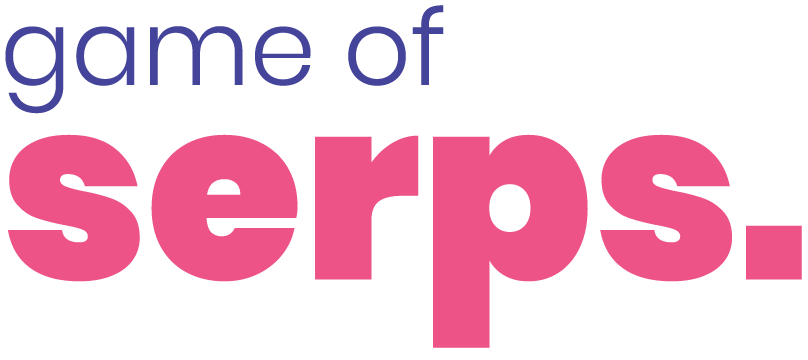Table of Contents
I’ve always been a proponent of multiple web assets to take up precious real estate on Google.
I’ve explained the process on my Dragon with 7 heads post.
Once a website starts ranking and getting calls, leads, or revenue, we always start a new website that would work better based on our experience with the initial dragon head.
In this case, we’ve got a large eCommerce website that needs to be split into a new domain.
I tried to get fancy with our current eCommerce website when our competitors haven’t updated their websites in 10 years. Most are bare and very basic, and I feel I made too many changes too fast.
We’ll mimic our competitors with our new dragon head, launch a bare, minimalist website, and only focus on top products. Although, we’ll work hard doing a better job.
It will be a template with a specific plan to make it easy for users to find what they’re looking for within 2-3 clicks.
In this post, I’ll go over what we’re doing now and what I will do with our new website.
Let’s get started.
Current and future architecture
Let me quickly go over how we’ve organized our current architecture:
- Category 1
- Sub-category 1
- Product
- Sub-category 2
- Product
- Sub-category 3
- Product
- Sub-category 1
- Category 2
- Sub-category 1
- Product
- Sub-category 2
- Product
- Sub-category 3
- Product
- Sub-category 1
- Category 3
- Sub-category 1
- Product
- Sub-category 2
- Product
- Sub-category 3
- Product
- Sub-category 1
Here’s how we’re going to test our new web asset:
- Category 1
- Product
- Category 2
- Product
- Category 3
- Product
We’ve had great success with flat websites with fewer categories. We’ll test this hypothesis on our new web asset.
Benchmarking our current website
The current website is doing okay, but I am disappointed with its performance.
The good news is that we’re aware of the problems and are working hard to fix the issues.
Our rankings
For our short-tail keywords, we’re up there with the best of them. I wouldn’t say we rank in the top 4, but we’re there in the top 5-6 spots nationally in the US.
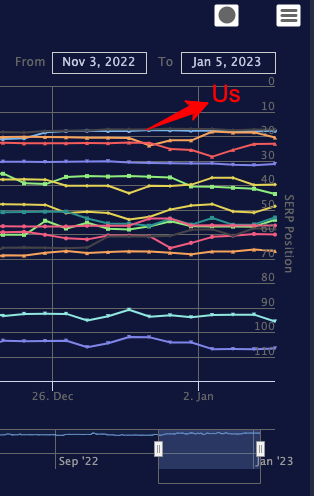
Where we’re lacking visibility is our most important pages, which would be the product pages.
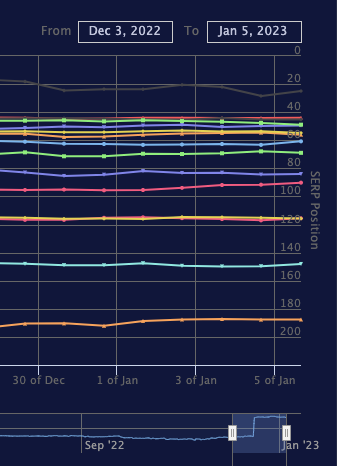
I don’t even want to show you where we are because it’s frankly embarrassing.
We have trouble getting Google to come back and cache newer versions of our product pages. It’s as if their crawlers have left and are taking their sweet time reassessing our work.
This is one of the main reasons I want to get a head start on a new web asset.
However, I am sure with every algorithm update; we’ll do better and better.
Traffic
Our three-month traffic report is not bad year over year.
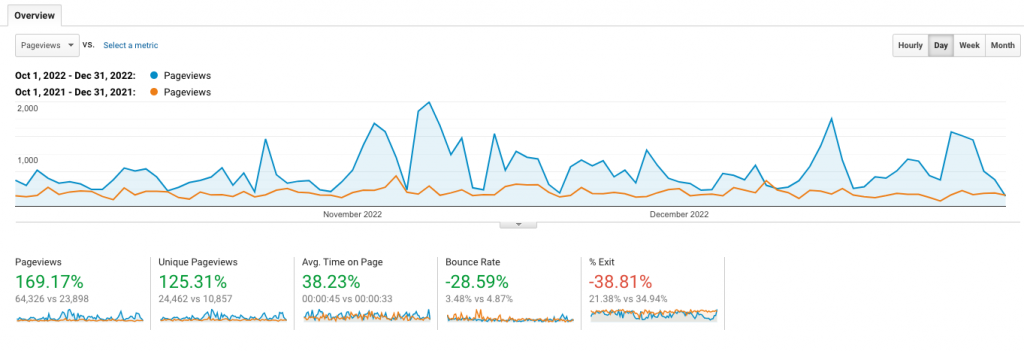
This is a joke when I know what we’re capable of.
Competitor comparison
Compared to our competitors, we’re growing but still at the bottom half.
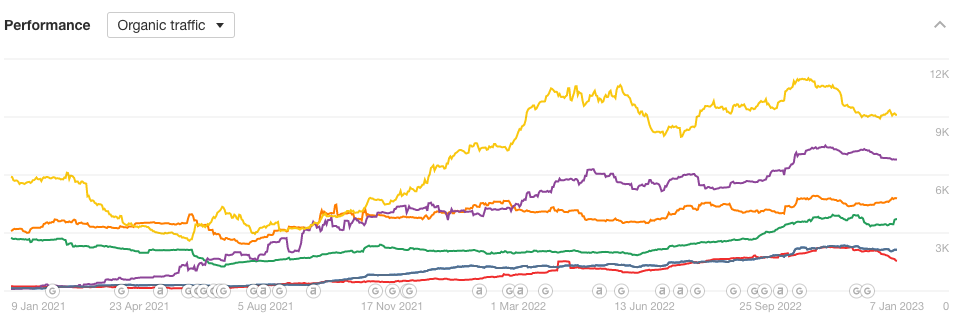
Here’s the best part. Do you see the orange line in the graph? We built that website. It was generating $25 million per year when I last checked three years ago.
Our goals
We don’t want to stop working on the current website. It will always be the prodigy child, making us all wealthy.
What I want to do is:
- Test new ideas on a separate website
- Take up more space on SERPs
We’ve been successful with this method before, and we’re ready to apply what we’ve learned to this project.
Products – Now and in the future
On the current website, we have thousands of products.
Some of these products are compatible with multiple widgets.
With our new website, we’ve decided to take 32 products that can work with almost 400 widgets.
Of the 400 widgets, there are specialty products customers can buy as add-ons.
We will likely have between two to three thousand products on our new web asset (or dragon head). This is significantly less than our current live website.
Our team didn’t pull these products out of our ass. Our choice is based on suggestions from our partners, internal experts, and traffic data.
Category set up
Setting up our categories properly is extremely important.
We deal with dozens of brands and hundreds, if not thousands, of products.
Here are our goals for the new website (just old the current live website) on the category pages:
- Ensure certain filters are set to be indexed.
- For example, Baby Jogger strollers.
- Keep category pages simple with just the products and reduce the number of words.
- This is because the top competitors have little to no content on category pages. We tested writing content on category pages, and it hasn’t seemed to work to be in the top 3 positions.
- Combine broader categories into a single category and let the customer narrow down what they’re looking for.
- For example, we won’t create a category for three or four-wheeled strollers. We’ll stick to strollers and let the customer narrow it down with category filters.
Number three is essential to understand because we’ve broken down categories into sub-categories. On the new website, we’ll stick to a broad category and let the customer decide what they want to do.
Our product pages
Our main eCommerce website has a pretty good structure for its product page template.
You can find my template on my product page optimization post.
I am not changing much on the new website for our product page template. I will add a new section to this website where people can easily see if product A can be used with models A, B, C, or D. This strategy will give me an NLP play I didn’t have before.
Building links to our new web asset
Our live eCommerce website is getting $1500/month for a link-building campaign.
We will not be actively building links for our new web asset. We should rank as long as we build an excellent website and get a few good links.
We plan to:
- Get a physical location in a southern state and verify that location with Google.
- Of course, we want to optimize our GMB page as much as possible.
- We’ll build a few relevant and high-quality links for a boost. The plan is to leave it there.
Our competitors have age on us but don’t build any links at all.
Let’s see how this pans out.
Competitor stats
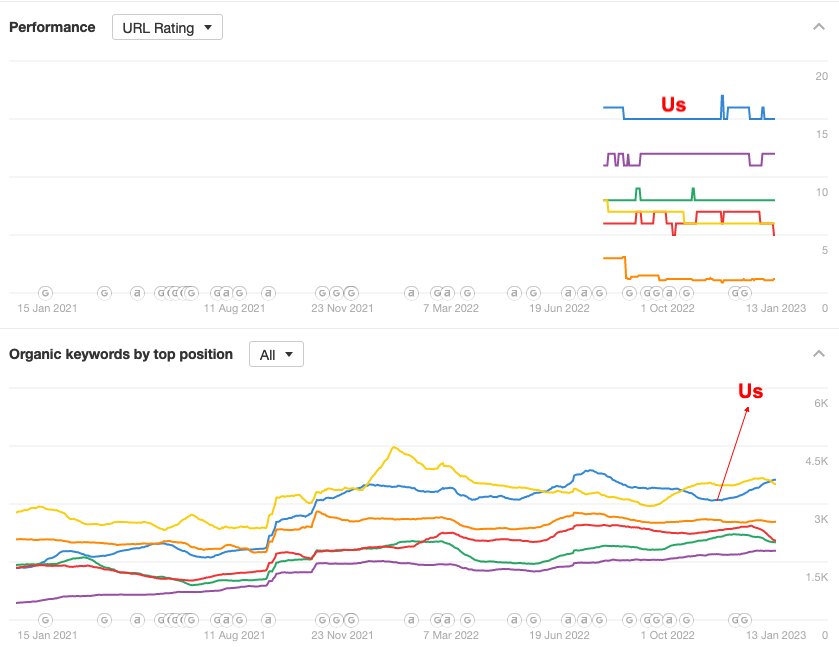
You might look at this chart and think we’re doing well. The truth is that we should be doing better. We rank for many high-level keywords, but our product pages have issues. We’re innovative, so we’ll solve all of this.
On our new website, we’ll only focus on ranking product pages.
I also want to bring up a huge change we’ll offer on the main dragon head and our new web asset. Our team now has access to hundreds of professional repairmen/women in North America. We will leverage this network as a massive leg over our competitors.
Final thoughts
I haven’t given you much other than our tactics with the new dragon head.
The goal of this campaign is to take up more space and stick it to the cartel which controls this industry. We’re small, but they’ve noticed us, and we’re coming for them.
We haven’t started yet, and we’re still in the planning stage, but when I launch and see the first impression, I’ll report it on my Twitter account.
That’s all I have for this month. Until next time, catch you all on my next post.
